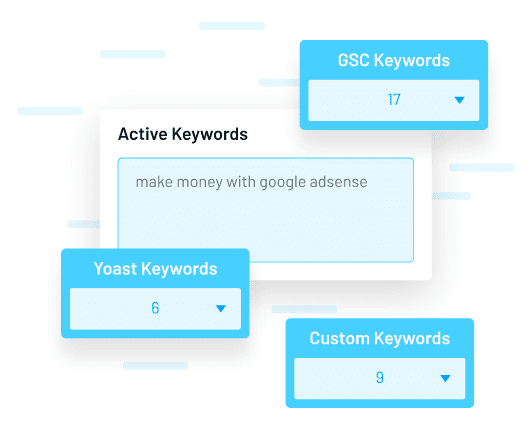In the ever-evolving world of digital marketing, voice search has emerged as a powerful tool that’s reshaping how users interact with the internet. With over 50% of U.S. adults using voice assistants daily and the voice recognition market projected to reach $26.8 billion by 2025, it’s no longer a question of if you should optimize for voice search — it’s a matter of how.
This article will guide you through the essential strategies for structuring your content to align with voice search queries. Whether you’re an SEO professional, a content creator, or a small business owner, understanding how to adapt your posts for voice search is crucial to staying relevant in 2024 and beyond.
What Is Voice Search Optimization and Why It Matters
Voice search optimization refers to the process of tailoring your website content to appear in voice-activated search results. Unlike traditional text-based searches, which often involve short, keyword-heavy phrases, voice searches tend to be longer, more conversational, and phrased as full questions.
For example, instead of typing “best running shoes,” a user might say, “What are the best running shoes for long-distance runners?” This shift in query style means your content must reflect natural language patterns, answer specific questions, and provide direct, actionable information.
The importance of this shift cannot be overstated. As more users rely on smart speakers, smartphones, and AI assistants like Google Assistant and Siri, businesses that fail to adapt risk losing visibility and relevance. By optimizing for voice search, you can capture a growing audience and improve your chances of appearing in featured snippets, local search results, and even AI-generated responses.
How Voice Search Impacts SEO Performance
Voice search isn’t just changing how people find information — it’s also influencing how search engines rank websites. Here’s how:
-
User Intent is Key: Voice searchers are often looking for quick, accurate answers. They’re not just browsing; they’re seeking solutions. This means your content must clearly address their needs, whether it’s a product recommendation, a step-by-step guide, or a simple fact.
-
Featured Snippets Are Crucial: Voice assistants frequently pull answers from featured snippets. If your content appears in these top positions, it significantly increases the chance of being cited in a voice search result.
-
Local Searches Are More Important: Many voice searches are location-based, such as “Where is the nearest coffee shop?” or “Best Italian restaurant near me.” Optimizing for local SEO ensures your business is visible to users who are ready to act.
-
Conversational Language Wins: Search engines like Google now use natural language processing (NLP) to understand context and intent. This means your content should mimic real conversations, using full sentences, questions, and even colloquial language.
By focusing on these factors, you can improve your site’s visibility, engagement, and conversion rates — all while keeping up with the latest trends in search behavior.
Step-by-Step Implementation Framework
To effectively structure your posts for voice search, follow this actionable framework:
1. Define or Audit the Current Situation
Start by analyzing your existing content and identifying where it may fall short for voice search. Ask yourself:
- Are your keywords too short or generic?
- Is your content structured in a way that answers specific questions?
- Are you leveraging FAQ sections or other question-based formats?
Use tools like Google Search Console, SEMrush, or Ahrefs to identify high-performing pages and see where you can improve.
2. Apply Tools, Methods, or Tactics
Once you’ve identified areas for improvement, apply the following tactics:
- Focus on Long-Tail Keywords: Use tools like AnswerThePublic, QuestionDB, or Google’s “People Also Ask” section to discover common questions related to your topic.
- Create Conversational Content: Write in a natural, easy-to-understand tone. Avoid jargon and keep your paragraphs short and to the point.
- Optimize for Featured Snippets: Structure your content around commonly asked questions and ensure your answers are concise and clear.
- Use Structured Data: Implement schema markup (like FAQ, HowTo, or LocalBusiness) to help search engines better understand your content.
3. Measure, Analyze, and Optimize
Track your progress using metrics like:
- Voice Search Citation Rate: How often your content is cited in voice search results.
- Voice-to-Action Conversions: How many voice-activated commands lead to actions like calls, directions, or purchases.
- Branded Query Growth: An increase in users searching for your brand after hearing it in a voice assistant response.
Use Google Analytics 4 and Google Business Profile Insights to monitor these KPIs and adjust your strategy accordingly.
Real or Hypothetical Case Study
Let’s take a look at a hypothetical case study involving a local bakery called “Sweet & Crumbly.”
Before Voice Search Optimization:
– The bakery had a basic website with short, generic descriptions.
– Their content was optimized for traditional keywords like “bakery” or “pastries.”
– They didn’t have a FAQ section or structured data.
After Voice Search Optimization:
– They added a detailed FAQ section answering questions like “What are the best pastries for breakfast?” or “Do you offer gluten-free options?”
– They implemented FAQ schema to make their Q&A content more discoverable.
– They optimized for local searches by including their address, hours, and services in the footer and on their Google Business Profile.
Results:
– Voice search traffic increased by 40% within three months.
– Their featured snippet position improved, leading to more mentions in voice search results.
– Calls and directions from voice searches increased by 30%.
This example shows how even small changes can lead to significant improvements in voice search performance.
Tools and Techniques for Voice Search
Here are some modern tools that can help you optimize for voice search:
- AnswerThePublic: Helps you discover popular questions related to your topic.
- Google Search Console: Tracks your performance in voice search and identifies opportunities for improvement.
- Schema.org: Provides guidelines for implementing structured data on your website.
- Ahrefs or SEMrush: Useful for researching long-tail keywords and tracking competitors.
- Google Business Profile: Essential for local SEO and voice search visibility.
- SurferSEO: Offers insights into content structure, keyword clustering, and semantic scoring.
These tools can streamline your optimization efforts and help you stay ahead of the competition.
Future Trends and AI Implications
As AI continues to evolve, voice search will become even more sophisticated. Generative AI models like ChatGPT and Gemini are already shaping how users interact with search engines, making it more important than ever to create content that is not only optimized for keywords but also for conversation.
Future trends to watch include:
- Personalized Voice Search: AI assistants will begin to tailor results based on individual preferences and behavior.
- Multi-Turn Conversations: Users will engage in more complex, back-and-forth interactions with voice assistants, requiring content that supports ongoing dialogue.
- AI Overviews: Search engines will increasingly provide direct answers, making it critical to be the source that AI cites.
To stay ahead, focus on creating content that is authoritative, conversational, and aligned with user intent. The future of SEO is voice-first, and those who adapt will thrive.
Key Takeaways
- Voice search is here to stay, with a growing number of users relying on it for quick, hands-free access to information.
- Long-tail, conversational keywords are essential for matching the natural language of voice queries.
- Featured snippets and structured data are key to appearing in voice search results.
- Local SEO is crucial, especially for businesses targeting nearby customers.
- Optimize for mobile and ensure your site is fast, accessible, and user-friendly.
By implementing these strategies, you’ll not only improve your visibility in voice search but also enhance the overall user experience on your website. Don’t wait for the competition to catch up — start optimizing for voice search today.
Meta Title: How to Structure Posts for Voice Search Queries – 2024 Guide
Meta Description: Learn how to structure your posts for voice search queries in 2024. Discover tips, tools, and strategies to boost visibility and engagement.
SEO Tags (5): voice search optimization, long-tail keywords, featured snippets, local SEO, structured data
Internal Link Suggestions: [Parameter #1: Long-Tail Keyword Research], [Parameter #3: Featured Snippet Optimization], [Parameter #7: Local SEO Strategies]
External Source Suggestions: https://www.google.com/search-console, https://schema.org










